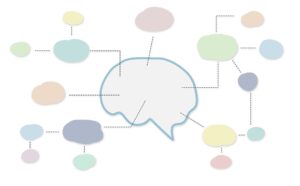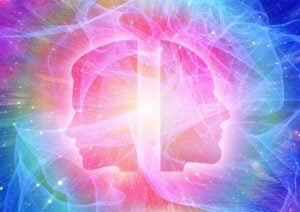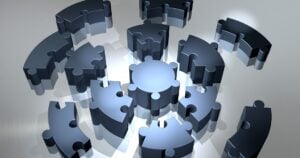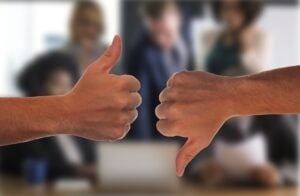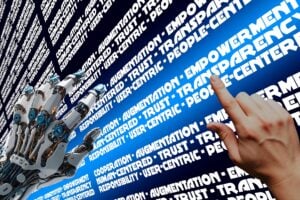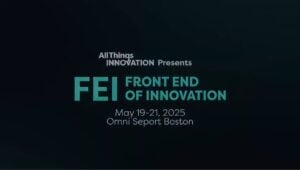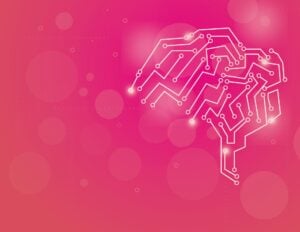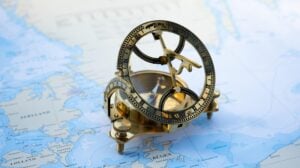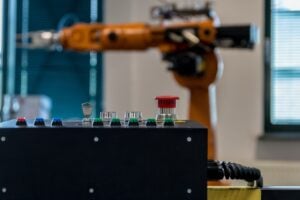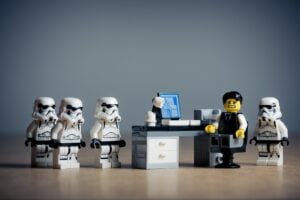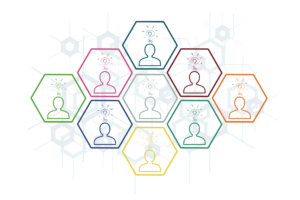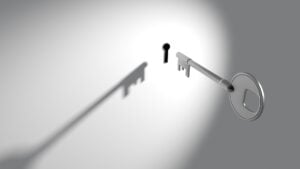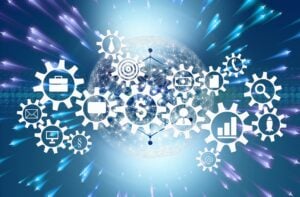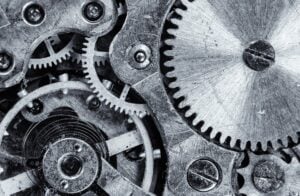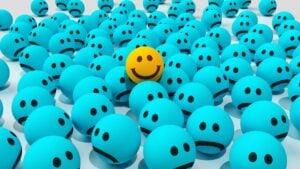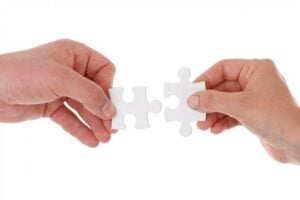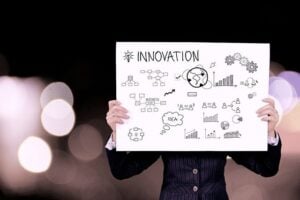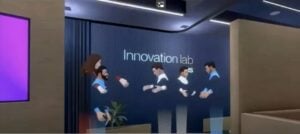Nair led one of the show’s proxy meetings, on “AI Impact: The Innovator’s Role in Protecting Against Cognitive Decay.” The discussion centered on AI’s impact on organizational human cognition. Nair explored how AI’s convenience fosters cognitive offloading, hindering critical thinking. Nair delved into the “editor not creator” paradigm, where reliance on machine information diminishes original thought. He also proposed strategies to counteract these effects, emphasizing self-governance and mindful technology integration, crucial for maintaining cognitive health in the age of AI.
On Machines and Humans
Your conversation and discussion at FEI focused on the current obsession with AI and the curse of convenience, as well as what you called cognitive decay. Can you tell us more about your exploration with AI?
“In my work that I’ve been doing for the last five years,” says Nair, “I’ve concentrated on my innovation work as well as the implications of what excessive use of AI does to the innovative mind. What I’ve concluded in the first stage is that there is some impact to just general intelligence in the overuse, obsessive use of generative AI, if not a warning label. Now before I even continue, I’m an AI enthusiast. I really grew up in the field of computer science for almost thirty years framing the question of what makes you human if the machine grows. Well, the time has come where the machine has grown to a point of adulthood.”
He continues, “The question is, what makes us more human now? Because everything we think that makes us human seems to be adaptable to a machine now. And the question is, where is that Venn diagram? And where do we belong? This proxy meeting is just a way of getting people’s input on that story. Again, I’m an enthusiast. I really believe the advanced technologies that we have are going to be incredibly transformative, not just to innovation but to everything that we think of as life. The careful use of it allows me to ask some deeper questions about when and where and how to apply it. So that’s what this proxy meeting brought about.”
Finding the Right Balance
Interestingly, today at FEI we held the theme of human insights day. Tomorrow will be about AI. What are your thoughts on this idea of collective intelligence? What does that mean to you and your organization?
“Collective intelligence is defined in many different ways,” observes Nair. “The way that I interpret it for my own edification is that it’s the seesaw between your human self and your machine self and how to manage that. What is that fulcrum that balances both of those well? So far, I’m seeing a lean towards machine intelligence being the heavier of the two, and humans just trying to adapt.”
He adds, “At this point, I think we need to move the balance carefully because we have to train, we have to engage, and we have to inspire humanity to participate with a new species that I think is coming about. The reason I use the word species versus a machine is because well, a machine can be a species, I guess, but it is because we are having job losses because machines can do the work better. The reality is jobs may be taken away in place of machines.”
“Corporations are saying, justify to me why a machine can’t do it, then I will hire a person,” relates Nair. “It’s kind of ironic, right? Before it was the other way around. When we reach a world where we are really competing for jobs with machines, we need to understand what we bring to the picture in the balance between us and AI machines. And that is a formative discussion, one that has a great deal of research and work to be done, but also to experience. We don’t know where the warning labels begin and where they end. And that edge is where I live.”
The Realities of the Rogue Mindset
Is the innovation field under pressure by AI, lack of resources, budgets, all these human resources? Yet, we had this rogue mindset presentation at FEI about how humans should push the boundaries of curiosity and creativity. What were some of your takeaways on the rogue mindset concept?
“First of all, I like the idea of rogue mindset,” says Nair. “I like the concept, but it is one that requires us to overcome one of the biggest problems as an innovator in a larger company. Now if, like myself, I reported to the CEO, I had direct access, I had influence, I had a budget. The rogue mindset is a convenience. I can do that because they are paying you to be contrarian, to build a transformative future. But even with my experiences, I had to satisfy the hunger of the status quo using my methods. I had to feed the meat of today to get the fruits of tomorrow. For me to play in that future game, I had to satisfy the energies today. Now if you have three levels below an executive, or one level below an executive, and you’re trying to sell the CFO and you’re trying to sell, where does the rogue mindset participate?”
Is the rogue mindset an asset for innovation? Or, perhaps, there is an aspect of risk to the concept as well if you work in a corporate environment.
“I think the rogue mindset is a mindset that you keep, not a mindset you express,” says Nair. “If you express it too loudly without having the concrete assets you provide for today, you’re running the risk. The mindset begins with you not being your own worst coward. Stop talking to yourself that you can’t do it. Start with the inspired future. Meditate on your own capacity and your own capacity to produce the future. And then act on it. Produce the results that would be satisfying, maybe in the long term, but also serve the present with your short term. And understand the dance between the status quo and transformation. Because sometimes people can’t see it. So the rogue mindset is not about suddenly becoming a rogue or going rogue. I think that would be unfair and insensitive for us to recommend to our members.”
The Art & Science of Innovation
You brought up this balance between these different factors and that you need that safe environment, that safe psychological space as well to experiment and to take the risk—but still be within the framework of aligning to business strategies.
“Fear is the number one cause of anything not being innovated upon. And it’s human fear. It’s fear of loss of your job. McKinsey had a study on this. Fear of loss of job, fear of humiliation, and one other fear, I guess, you can create in your mind. Everything starts and stops in your mind. I understand. The mind of the innovator is the most precious commodity in a business. However, the threat to the status quo affects a lot more lives than the beauty of the future,” says Nair.
Nair relates, “One must understand how to balance the two. One must be very nuanced in the art form. And this idea of coming out of a conference like FEI and getting all excited because you talk to ten other people like you, you go back in the office and you start acting rogue—what happens? You have to learn to be smart about it. You have to be a polite yet effective innovator. And you have to give space for others. But if you are selling fearlessness, you can’t have it inside you. It doesn’t work.”
Contributor
-

Matthew Kramer is the Digital Editor for All Things Insights & All Things Innovation. He has over 20 years of experience working in publishing and media companies, on a variety of business-to-business publications, websites and trade shows.
View all posts













